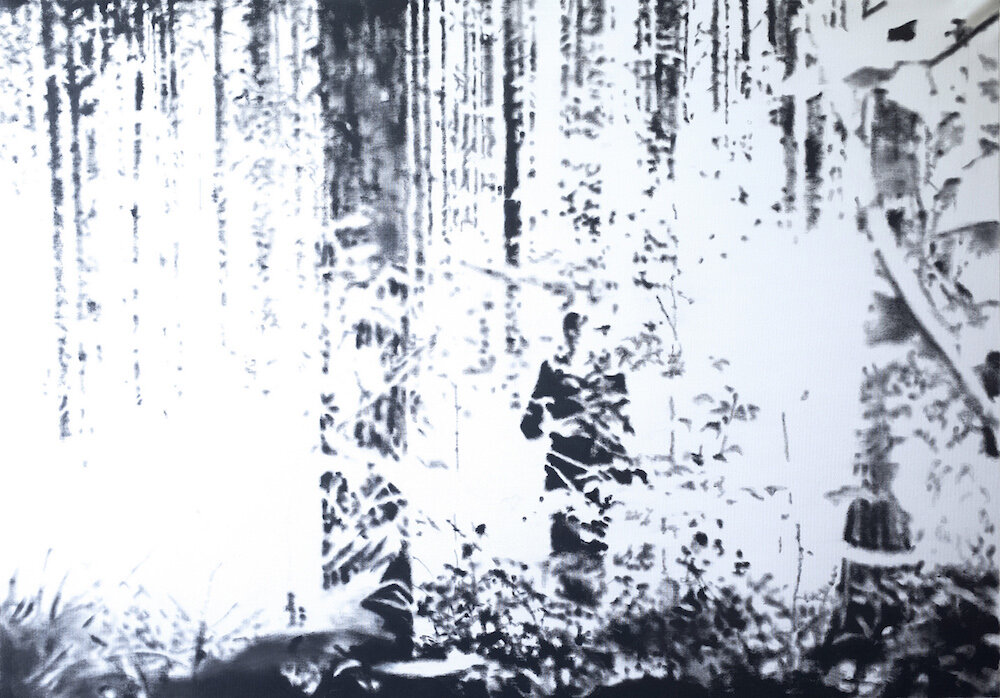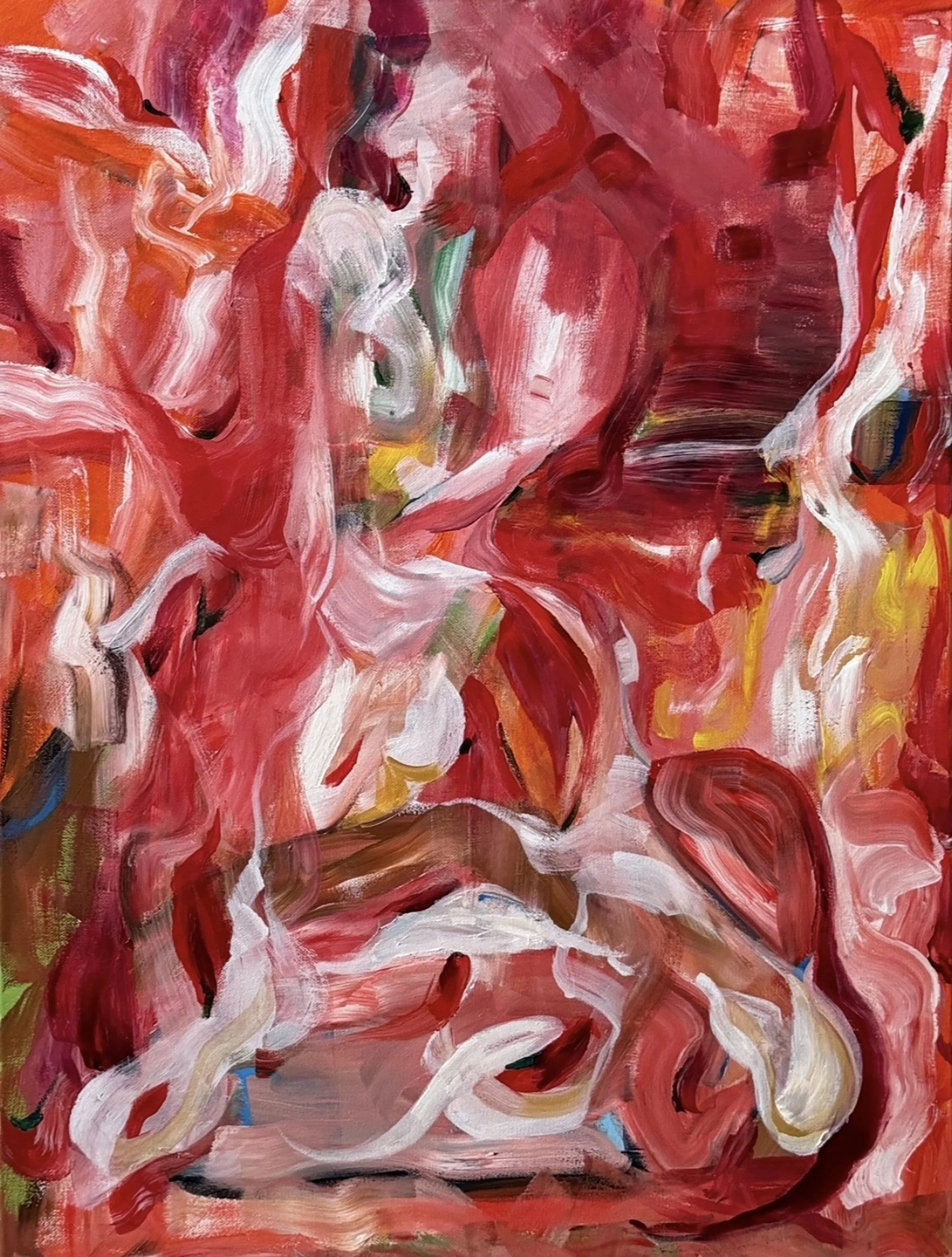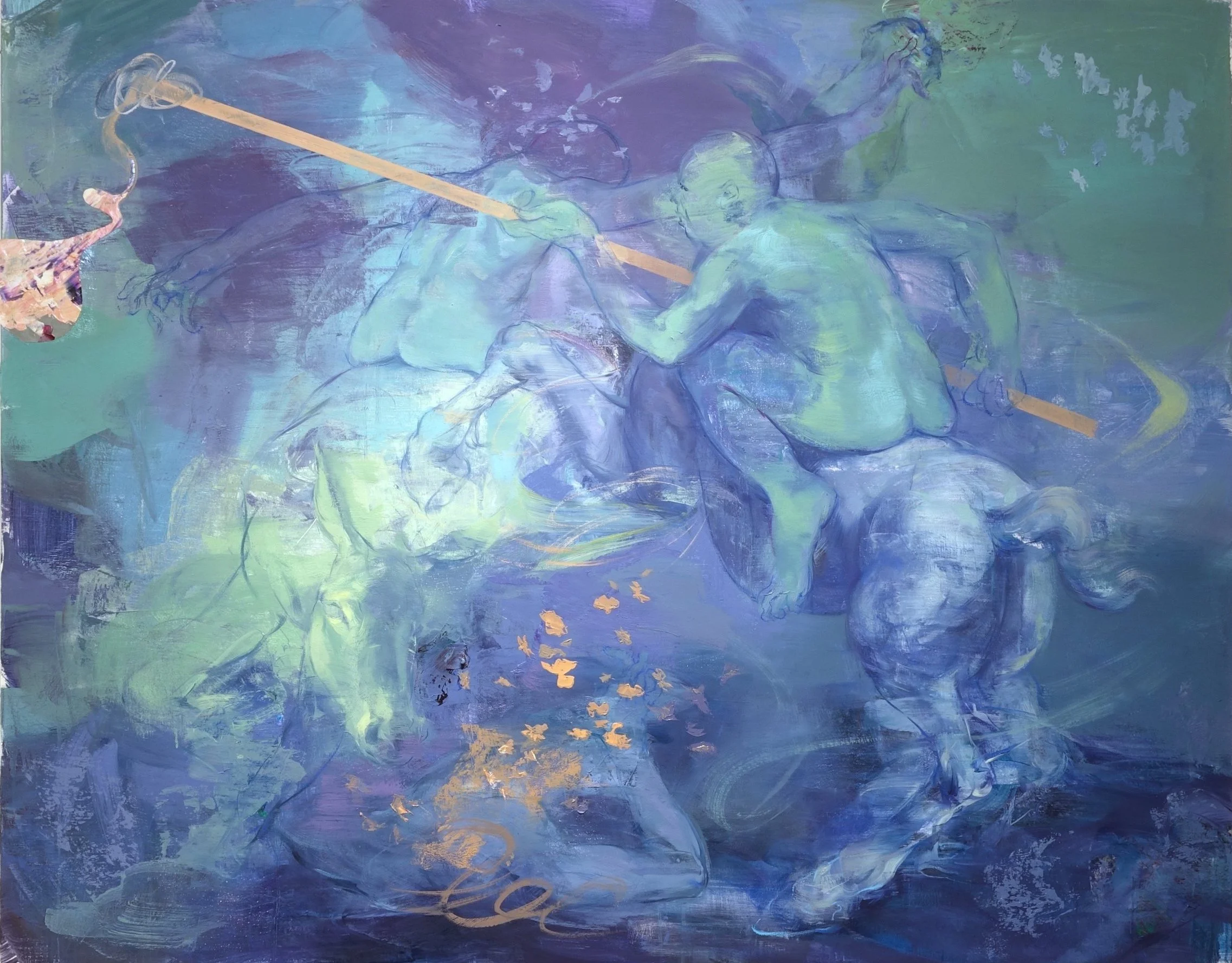10 Questions with David Dejous
Since 2017, the painter David Dejous has been part of various exhibitions in Europe, including London, Milan, Paris, and Basel. Educated as an architect, he got acquainted with art by a slow and compelling process. Architecture tools as hand sketching, collage, CAD were first used as a medium, and painting occurred after an encounter in London with Jock McFadyen, a Scottish artist. In his work, subjects are treated as series, each of them in its own style, exploring the possibilities of a desaturated color scheme, letting recurrent themes as absence and void emerge.
Distortion Series. Slut, acrylic on canvas, 164x127 cm, 2020. David Dejous©
ARTIST STATEMENT
"David Dejous works to reveal the paradoxes within images, considering their equivocal nature and their ambiguities. He draws upon the confusion between the various representation codes associated with painting, photography, drawing and photocopying, screen-printed documentary, and scenographic media. The resulting images raise issues of authenticity, realism, and illusion."
INTERVIEW
Could you tell us a little more about your background? How did you start getting involved with painting?
I studied architecture and developed my interest in art as an autodidact. I've always been attracted to the creative process, whatever the field. In terms of creation, architecture is naturally submitted to harsh constraints, cost, regulations, technical aspects, etc. To me, art was like a space of freedom, a breath of fresh air that proved to be necessary other the years. I particularly enjoy painting and drawing as mediums that lead to a sense of optimal freedom. All you need is a brush and a tube of paint...
What is your personal aim as an artist?
That would be to express feelings that could move other people.
Distortion Series. Agreement, acrylic on canvas, 164x127 cm, 2020. David Dejous©
Your paintings are very gestural, yet they look almost like prints or photographs. What is the idea behind this approach to painting?
Painting allows these tricks, so I use them. Photography, print work, and even scenography are important to me. Most of my figurative work is based on photographs, and I choose to express it and play with it instead of concealing it. But to make a painting look like a photograph is not the goal. I would say it is just another tool used for the series. I work with series, and somehow each one of them has its own language. I like the form to match the content, and if the idea is to reveal the paradoxal aspects of an image, playing with illusions makes sense.
In your work, you often deal with the ideas of illusion, ambiguity, realism, and authenticity. Do you think all these concepts can coexist in art? And if so, how?
I've been exploring the paradoxal potential of images, trying to be on the lookout for ambiguities and mixed feelings. I believe that dealing with dubious aspects of pictures is relevant, especially nowadays, considering the avalanches of information drained by the internet. Illusions and manipulations are part of our everyday lives, and I feel that some people are far too credulous with images. I guess I want to produce pictures that lead to questions rather than answers.
Distortion Series. Lassitude, acrylic on canvas, 164x127 cm, 2020. David Dejous©
Your use of color is peculiar as well. Your paintings are almost always black and white, with just sporadic touches of colors. Is there a meaning behind your use of colors?
I try to set elements according to the subject of the series. If bold color is not necessary, I don't use it. I prefer the painting to be meaningful, although probably less spectacular. That being said, I don't reject color at all. I like to use it with sporadic touches as a presence underneath, adding some tension to the painting. Mostly I never use pure black. I prefer to mix it with color, blue for example, even though it might be invisible. I also use pure indigo that looks almost black. Somehow this use of color is part of the illusional process. Also, I like to consider using bolder colors as a possible way to push my work forward in the future.
Hunt Series. Night, oil on canvas, 116x81 cm, 2019. David Dejous©
Hunt Series. Rain, oil on canvas, 116x81 cm, 2019. David Dejous©
Where do you find inspiration?
Everywhere, really. I always carry a small camera with me, just in case, like a notebook. I generally use my own photographs, but I can also pick up some existing pictures from the internet. Again, that depends on the subject. For example, the series Fantoches (Puppets) is based on photographs, originally showing people in various neglect states, whether trivial or dramatic. As the origin is concealed, each painting imposes a guessing game. I had to mix up my own images with some taken from the web to show as many situations as possible. That was a condition dictated somehow by the series to set the subject, questioning the origin and truthfulness of images. But all series are not based on photographs. The idea of the Writing series came by chance, as I was draining my brushes, leaving strange and beautiful lines on the paper...
What do you hope that the public takes away from your work?
Actually, it is hard to predict impact or reaction. I hope to trigger some attention. And I'm always glad if some people manage to engage a dialogue with my paintings, even in a way I didn't expect.
In your biography, you cited the artist Jock McFadyen. How did he influence your work, and what other artists do you draw inspiration from?
I've met Jock on few occasions while I was living in Britain. He was working on his 'Roads' series at the time. Although visually very far from my work, I must say his approach had a fair impact on me. I love the way he manages to get some poetry out of dull subjects, like a motorway, for example. Many artists are important to me, all very different. I am fond of the Neapolitan painting of the 17th century, especially José Ribera. I feel very close to René Magritte's approach as well, although my work has nothing to do with surrealism. François Morellet as well.
Phenomena Series, Dimitri 65X50cm, oil on canvas, 65X50cm, 2019. David Dejous©
Phenomena Series. TOMMY, Oil on canvas, 65X50 cm, 2018. David Dejous©
After a whole year of stop, do you have any exciting plan for 2021 in terms of exhibitions or new projects?
I will be part of the NordArt exhibition in Germany from June to October 2021. Last year was a busy year for me as I moved both flat and studio. Yet, I had some time to prepare for the next series.
Finally, share something you would like our readers to know about you?
I'm very good at imitating birds. As a teenager, I used to whistle at school in the lecture room, having fun watching people looking for an animal that doesn't exist. I do it again sometimes, in restaurants or waiting rooms. So if you hear birdsong in some unusual place, don't be too surprised. I might be around.

























